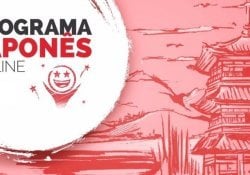I think everyone knows the discipline and education of the Japanese, there is a huge cultural difference between the Japanese and Brazilians, the level of formality is almost absent among us while it is exaggerated among the Japanese, including in the Japanese language.
As much as Japan has been westernizing in recent years, there is still a great hierarchy, where there are different types of formality according to the person's social level.
In the Japanese language there is the polite language (敬語) which is used to converse formally with people of different levels. Using different vocabulary and structures and expressions. O Keigo It is divided into 3 categories the Polite, Respectful and Humble.
Índice de Conteúdo
Simple form
Before we talk about the 3 Keigo, it is worth remembering that there is also the simple and informal form, which is common to be used with people you already have an intimacy with (relatives, friends), this form is known as dictionary form, for it presents the words at their root, in the simplest form.
Example: the verb “to eat” in the simple form is 食べる (TABERU)
丁寧語 - Teineigo - Polite
This is the polite language most used is considered the standard of formality, you will normally use with people of a higher social status than you. This keigo shows courtesy or respect for the person addressed. This includes the structures “masu” and “desu”.
We use it when talking to strangers, people we are not familiar with, older people and superiors, or anyone we want to show respect (your boss, your teacher). This is usually the way foreigners are taught to speak Japanese, as it is ideal for everyday interactions; it is also the most used by newspapers and news programs.
Example: the verb “to eat” in the polite form is 食べます (TABEMASU)
尊敬語 - Sonkeigo - Respectful
It is commonly called the Honorable Form. This Keigo is used when addressing or speaking to people far above our hierarchy, such as superiors and clients, usually people in positions of power.
Much used by receptionists of stores, markets, pharmacies, clerks, proletariat of the genre. You may have already come across the expression いらっしゃいませ (irasshaimase), which customers hear when entering a commercial establishment.
Its function is to honor and exalt the person we speak of, almost as if we idolized him; therefore, this form should NEVER be used to talk about ourselves and our own actions!
Example: the verb “to eat” in the honorific form is 召しあがる (MESHI AGARU)
The article is still halfway through, but we recommend also reading:
謙譲語 - Kenjougo - Humilde
Commonly called the Form of Humility, this is the type of formality used by customers when addressing those who serve them. It can also be used when asking something as formally as possible to someone the speaker considers superior, or worthy of respect, as for example, in the expression that many may already know: よろしくお願いします (yoroshiku onegai shimasu), in which the speaker formally asks the listener to be kind, or as we translate “nice to meet you”.
This keigo is used when we talk about ourselves or the group we belong to, but putting ourselves in a position of extreme humility towards the listener, diminishing ourselves. Usually this speech implies that our actions are aimed at satisfying, helping or serving the listener, so it is very common to hear merchants and store attendants using it.
Example: the verb “to eat” in the humble form is 頂く(ITADAKU)
The verbs
It may seem complicated, because it's hard enough to learn one word for everything, imagine four? Only time, and life in Japan can make you get used to keigo, even the Japanese have difficulty, but it's worth studying, so you don't get lost when reading or talking to someone, memorize at least some verbs I'm leaving the list below:
| Verb | Simple | Honorific language | Kenjōgo | Teineigo |
|---|---|---|---|---|
| see and look | 見る; miru Translation: see; miru | ご覧になるgo-ran ni naru | 拝見するsuru Haiken | 見ます mimasu |
| Know | 会う au | .お会いになるo-ai ni naru | お目にかかるo-me or Kakaru | 会います aimasu |
| Ser one | ある aru | ござるgozaru | ||
| いる iru | いらっしゃるirassharu おいでになるo-ide ni naru |
おるoru | おるoru | |
| come / go | 来る kuru (come) 行く Iku (go) |
伺う ukagau 参る Mairu |
参るMairu | |
| Saber | 知る shiru | ご存じ go-zonji | 存じあげる zonji ageru | 存じている Zonjite iru |
| Eat Drink | 食べる taberu (to eat) 飲む nomu (drink/drink) |
召しあがる-meshi-agaru | 頂く itadaku | 頂く itadaku |
| To receive | もらう Morau | 頂く itadaku 頂戴する Chodai-suru |
もらいます moraimasu | |
| To give (make, bring) When you do the action. | やる yaru (considered rude today, except in Kansai dialect)
あげる ageru (once the humble form) |
差しあげる sashiageru | あげます agemasu | |
| To giveWhen another does the deed. | くれる kureru | くださる Kudasaru | くれます kuremasu | |
| do / do | する suru | なさる nasaru | 致す itasu | します shimasu |
| To say | 言う iu | おっしゃる ossharu | 申し上げる Moshi-ageru 申すMOSU |
言います iimasu |
| To use | 着る kiru | お召しになる omeshi ni naru | 着ます kimasu | |
| To sleep | 寝る neru | お休みになる O yasumi ni naru | 休みます Yasumimasu | |
| To die | 死ぬ Shinu | O nakunari ni naru | 亡くなる Nakunaru |
Finally, let's look at some examples and phrases using Keigo.
The first example shows the phrase "This is a book" at different levels of formality.
| Informal | Educated | Formal | polite and formal |
|---|---|---|---|
| これは本だ kore wa hon da. |
これは本ですkore wa hon desu. |
これは本である kore wa hon de aru. |
これは本でございます kore wa hon de gozaimasu. |
The second example has been showing how to do requests or commands. There are several different ways of formality for some occasions, let's show the famous phrase to interact and ask for a favor or friendship.
- よろしく頼む / yoroshiku tanomu (to be used between male friends, polite)
- よろしく頼みます / yoroshiku tanomimasu (Familiar people)
- よろしくお願いします / yoroshiku onegai shimasu (polite)
- よろしくお願い致します。 / yoroshiku onegai itashimasu. (Humble)
- よろしくお願い申し上げます。 / yoroshiku onegai mōshiagemasu. (extremely formal)
Of course there are many other things not mentioned in this article that are related to the polite language, such as Japanese honorifics or suffixes. Keigo is a very big subject to be studied, in the future other articles on this subject will be created. I hope you enjoyed.
Sources: Mainichi Nihongo / Wiki






